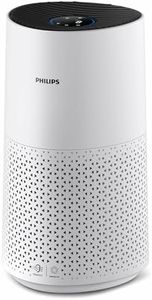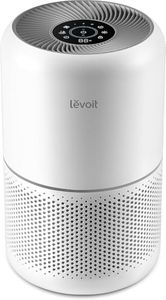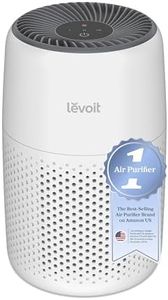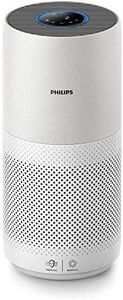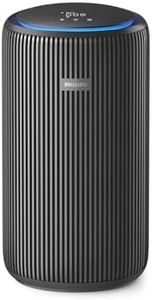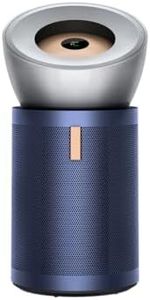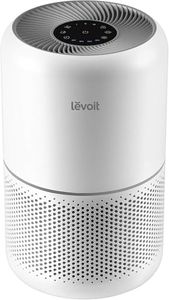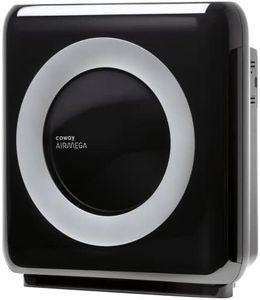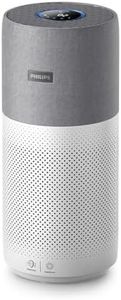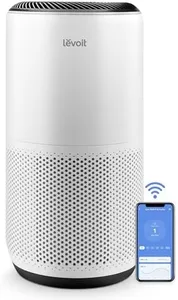We Use CookiesWe use cookies to enhance the security, performance,
functionality and for analytical and promotional activities. By continuing to browse this site you
are agreeing to our privacy policy
10 Best Portable Air Purifiers
From leading brands and best sellers available on the web.Buying Guide for the Best Portable Air Purifiers
Choosing a portable air purifier can make a big impact on your indoor air quality, whether you want cleaner air at home, in your office, or when traveling. Since portability is key, it’s important to focus on features that will help you use the purifier easily in different spaces while effectively cleaning the air. Understanding what each specification means and how it fits your lifestyle will help you select the best model for your needs.Filter TypeThe filter type refers to the kind of filtration technology the air purifier uses to trap particles like dust, pollen, pet dander, or smoke. Common types are HEPA (high-efficiency particulate air), activated carbon, and pre-filters. HEPA filters capture very small particles and are best for allergies or dust; activated carbon filters help reduce odors and gases; pre-filters trap larger particles, extending the main filter's life. Think about what bothers you most: allergies, pet smells, or general dust, and choose a filter or combination of filters tailored for those issues.
Coverage AreaCoverage area refers to the maximum size of the room where the purifier can effectively clean the air, usually measured in square feet (sq ft) or square meters (m²). Portable models typically range from small (under 100 sq ft), medium (100–250 sq ft), to large (over 250 sq ft). To get the best results, pick a purifier that matches or slightly exceeds the space where you plan to use it. If you want to move it around, think about your largest room, but if it's just for your desk or bedside, a smaller coverage area will do.
CADR (Clean Air Delivery Rate)The CADR rating measures how quickly the purifier can clean the air of pollen, smoke, and dust, and is typically given in cubic feet per minute (CFM). Higher numbers mean faster and more effective cleaning. Small purifiers may have CADR ratings under 100, while larger ones go above 200. If you need quick results (for example, dealing with smoke or frequent allergens), aim for a higher CADR. For continuous, low-intensity cleaning (like in a bedroom), a moderate CADR works fine.
Size and WeightSize and weight determine how easily you can move the purifier between rooms or pack it for travel. Very compact units fit on a bedside table or desk and can weigh just a couple of pounds, while larger portable models might need their own spot on the floor. If you want maximum portability, focus on the lightest, smallest options, but if performance matters more and you plan to keep it in one place most of the time, a slightly larger size can also be suitable.
Noise LevelNoise level, measured in decibels (dB), tells you how loud the purifier is when running. Quiet units (under 30 dB) are ideal for bedrooms or offices where you need silence, while louder ones (over 50 dB) may only be comfortable in living rooms. Consider when and where you’ll use the purifier most: if you’ll run it while sleeping or working, pick one with a lower noise level to avoid disturbances.
Power Source and Battery LifePortable purifiers can be powered by plugging into a wall outlet, USB, or by using rechargeable batteries. Battery-powered models offer the most flexibility when traveling or in areas without easy access to a plug, but look at the battery life to make sure it lasts as long as you need—some last only a few hours, others can go a whole day. If you mostly use it in one place, a plug-in model might be more convenient. Match the power option with your typical usage scenario.
Maintenance and Filter ReplacementAll air purifiers require maintenance, mainly involving cleaning or changing filters. Some have filter indicators to let you know when it's time to replace them. Filters can last from a few months to a year, depending on usage and model. If you prefer low upkeep, look for models with longer-lasting filters or clear indicators. Thinking ahead about how often you'll need to maintain your purifier will help you choose one that fits your routine.
